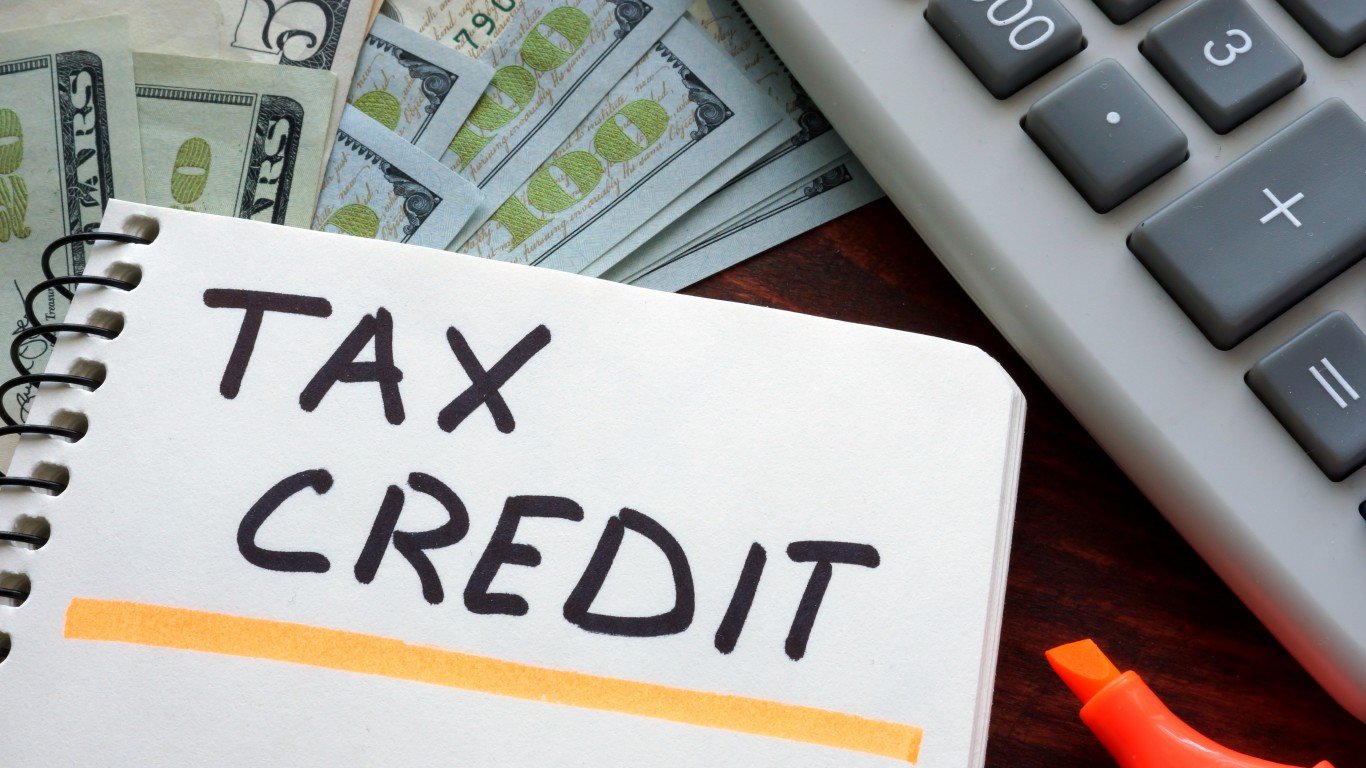

In 2018, the first year that the Republican tax cuts enacted in December 2017 became effective, three of America’s largest banks received tax breaks totaling more than $12 billion. Of the 379 companies who made a profit last year, 91 paid no tax at all.
The 379 companies listed on the Fortune 500 that made a profit in 2018 received tax subsidies totaling $73.9 billion, about 54% of what the companies would have paid ($161 billion) if they had paid the statutory rate of 21% on reported profits of $765 billion. As a group, the 379 companies paid 11.3% of their profits in federal tax last year. The corporate tax rate was cut for 2018 from a level of 35% first set in 1993.
Three of the country’s biggest banks received the biggest tax breaks. Bank of America received tax breaks totaling $5.6 billion while JPMorgan Chase got breaks totaling $3.7 billion and Wells Fargo received breaks totaling $3.2 billion. Amazon ($2.4 billion) and Verizon ($1.7 billion) rounded out the top five.
The five profitable companies with the lowest percentage tax payments were apparel maker Phillips-Van Heusen (-168.1%), newspaper publisher Gannett (-164.2%), financial services firm INTL FCStone (-110.3%), Murphy Oil (-84.1%), and engineering and construction firm AECOM (-76.5%). Without $31 million in tax breaks, for example, Phillips-Van Heusen would have lost $13 million in 2018 instead of posting a profit of $18 million.
The data was reported Monday afternoon by the Institute on Taxation and Economic Policy (ITEP).
In addition to the 91 companies that paid no tax at all in 2018, another 56 paid between zero and 5% of profits in tax. Their effective tax rate was 2.2%. Fully half the companies (51.4%) paid effective tax rates that amounted to less than half the 21% statutory rate.
The industry that posted the lowest effective tax rate in 2018 was industrial machinery with a negative rate of 0.6%. Natural gas and electric utilities posted a negative rate of 0.5%. No other industry posted a negative rate. The auto and auto parts industry paid an effective tax rate of 1.5% and the oil, gas, and pipeline industry paid an effective tax rate of 3.6%. Rounding at the lowest five tax rates was the chemical industry with a rate of 4.4%. The effective tax rate in the financial industry was 10.2% even though the three largest recipients of tax breaks were megabanks.
ITEP notes that the Reagan tax cuts of 1981 lowered the tax rate for businesses to 14.1%. Reagan was eventually forced to raise the effective tax rate to 26.5% even though the tax reform bill of 1986 cut the statutory rate from 46% to 34%, where it remained until 1993.
The effective tax rate remained at 26.5% until around 1996 when it dipped to 21.7% before falling to 17.2% in 2002. By 2015 it was back up to 21.2%.
Here’s what ITEP says about today’s effective rate: “This means that the 11.3 percent effective tax rate found in this study is likely the lowest effective tax rate in the last 40 years, well below the 14.1 percent effective tax rate that shocked President Reagan into supporting loophole closing reforms.”
By today’s reckoning, Ronald Reagan was a tax and spend liberal.
The full ITEP report is available here.
Take This Retirement Quiz To Get Matched With A Financial Advisor (Sponsored)
Take the quiz below to get matched with a financial advisor today.
Each advisor has been vetted by SmartAsset and is held to a fiduciary standard to act in your best interests.
Here’s how it works:
1. Answer SmartAsset advisor match quiz
2. Review your pre-screened matches at your leisure. Check out the advisors’ profiles.
3. Speak with advisors at no cost to you. Have an introductory call on the phone or introduction in person and choose whom to work with in the future
Take the retirement quiz right here.
Thank you for reading! Have some feedback for us?
Contact the 24/7 Wall St. editorial team.



